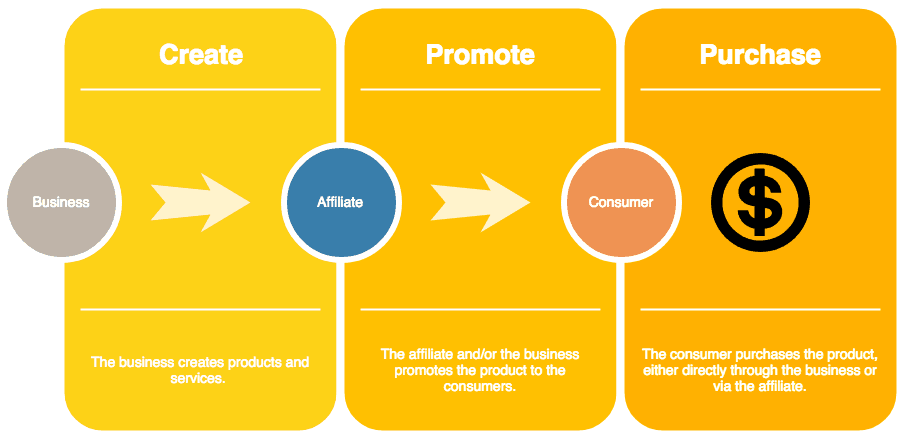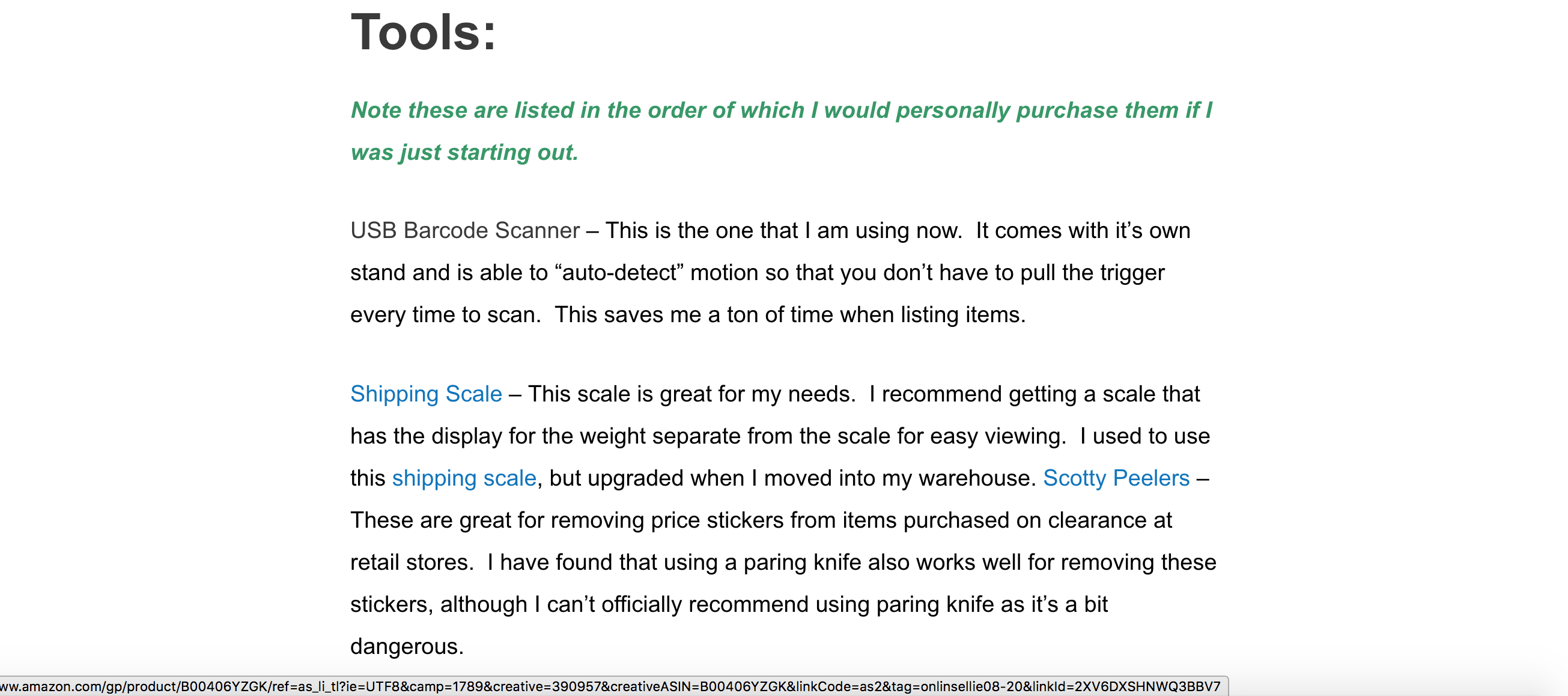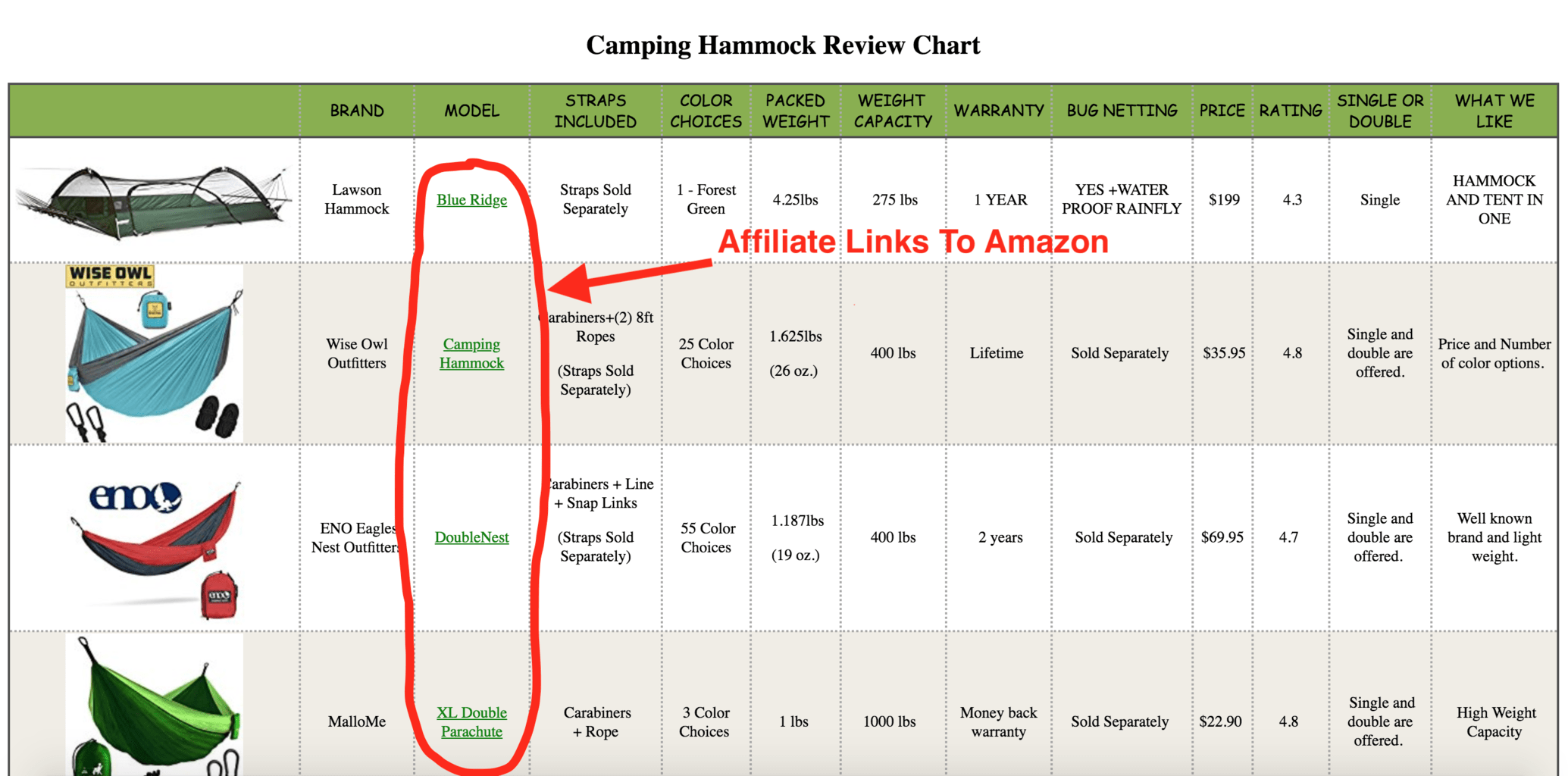This beginner’s guide to affiliate marketing will teach you the most effective way to start a niche site in 2022, regardless of what your motivations are.
There are a lot of reasons you may be finding yourself reading a guide on how to start affiliate marketing for beginners.
Maybe you like how easy it sounds to get started with affiliate marketing and want to earn extra cash on the side.
Maybe you’ve heard stories of people making hundreds of dollars while they sleep thanks to affiliate marketing.
Or maybe you’ve seen that there are many people out there earning five figures per month from affiliate marketing and even some that earn six.
These stories give affiliate marketing an undeniable lure.
Imagine if you achieved even a fraction of that level of success. That would probably mean a lot more time with family and friends, a lot more travel, and a lot less stress.
The question everyone seems to have is, ‘Can I make money from affiliate marketing too?’
The answer to that question is a definite yes. I know because I’ve seen first hand just how powerful affiliate marketing can be. I recently made over $10,000 after sending just a few emails promoting one product from an affiliate I work with.
There’s a catch though.
Making money with affiliate marketing is not as simple as it used to be.
For years, all you had to do was find a niche without a lot of content, churn out a bunch of low-quality reviews, and watch the money flow in.
You would struggle to make a dime using a strategy anywhere close to this today.
The last section in this post is going to share what I believe is the number one thing you can do to start earning affiliate income. If you don’t read anything else, at least read that section.
But first, a quick note about this guide:
This post is the introduction to a series on how to start affiliate marketing for beginners in 2018 and beyond.
My goal when I started writing this was to make the most comprehensive, useful, and easy-to-implement beginner’s guide to affiliate marketing anywhere on the internet.
I wasn’t able to go into enough detail in a single post, so I considered turning it into an affiliate marketing eBook. I decided to just make it publicly available for free instead.
I’m breaking this guide up into several posts, which I will call chapters. If you are looking for a step-by-step guide to being successful with affiliate marketing, this is it.
Below I’ll add the links to each chapter as I publish them, but I encourage you to read at least the first section of this intro post before continuing.
Chapter 1: Choose a Good Niche
Chapter 2: Build a Niche Website for as Little as $35
Chapter 3: Create Excellent Content for Your Site
Chapter 4: 11 Free Ways To Increase Traffic to Your New Blog
Chapter 5: The Smart (& Easy) Way To Find Affiliate Products to Promote On Your Site
Chapter 6: Ideas for Scaling
Chapter 7: Affiliate Marketing Success Stories
***I do not plan on updating existing subscribers about each one of these posts when they go live. If you would like to know as soon as each one is published, click here.
What Is Affiliate Marketing and How Does It Work?
Affiliate marketing is actually a pretty simple concept.
In a basic transaction between a business and a consumer, the business offers a product or service for sale, promotes their product to the consumer, and then the consumer makes a purchase.
Affiliate marketing inserts an additional layer to this relationship:
- The business offers a product or service for sale.
- The affiliate promotes the product or service on behalf of the business.
- The consumer makes a purchase, either directly through the business or through the affiliate.
When an affiliate aids in a transaction, they earn a predetermined commission from the business. This commission is typically either a fixed amount per transaction or a percentage of the overall sale price.
In this way, an affiliate serves a function similar to that of a salesperson.
Unlike a salesman, you are not bound to promoting a single type of product or the products from an individual business. You are also free to share your real experiences with whatever you are sharing, instead of repeating a fact sheet and the marketing claims submitted by the business.
How Are Affiliate Referrals Tracked?
Affiliate referrals and earnings are typically tracked using cookies.
A cookie is a small series of numbers and letters that get stored within your browser using a text file so that a website can keep track of things like traffic, referrals, logins, and what pages someone views.
Each affiliate for a business or product will receive a unique id that gets stored as the cookie. An affiliate cookie is usually inserted using a special link which is given to the affiliate by the business.
Each cookie is only valid for a specific duration which is set by the business. The most common cookie duration is 30-60 days, although they can be significantly longer or shorter. Amazon’s cookie duration on regular affiliate links is only 24 hours.
If a purchase is made by someone who has an active cookie, the affiliate receives a commission.
Once that time period is up though, an affiliate will no longer earn a commission if the referred visitor makes a purchase. Browser cookies can also be cleared by the consumer at any time.
Other ways that affiliate referrals can be tracked is by using special landing pages for each affiliate or by giving affiliates unique coupon codes. In those situations, the affiliate is credited with purchases that come from the landing page or when the coupon code is used.
A Specific Example of Affiliate Marketing In Action
The explanation above may come across as a bit technical.
I’ve found that the easiest way to help people wrap their heads around how affiliate marketing works is to just use actual, real-world examples of affiliate marketing in action.
Head on over to my resources page if you’d like to see what an affiliate link looks like. The first few links are to my own products, but as you scroll down the page you’ll be able to find examples of products that I am an affiliate for.
You’ll notice that the URL that displays in the bottom left corner when you hover over the link has some extra stuff at the end. That is my unique affiliate ID.
If you were to click on that link and purchase Inventory Lab, I would get a commission.
That is an example of an affiliate program with an individual business, but you can also join affiliate programs that give you access to a wide variety of products.
The most popular of all affiliate programs is the Amazon Associates program. Even though Amazon has relatively low commissions and a short cookie duration, it’s popular because it gives you access to a massive array of products.
It’s also a website that millions of people trust and use daily, plus you get commissions on any items they purchase after visiting from your link (not just the ones you link to).
If you look further down on my Resources page, you’ll find a section called ‘Tools’. Many of the products listed there include Amazon affiliate links. Look at the bottom of this image to see an example:
I have no problem sharing any of this because I am upfront about the fact that I use affiliate links and actually stand behind my recommendations. For example, Inventory Lab offers incredibly useful tools that I pay for and use in my own business.
While plenty of people suggest products simply because they can make money on them, I highly recommend limiting your promotions to products, brands, people, and businesses that you actually like, use, or trust.
You don’t have to actively use every product that you link to, but you should only recommend a product if you have good reason to believe that it would help the people you are sharing it with.
Affiliate Marketing FAQs
How much money can you make as an affiliate marketer?
This is going to be highly variable and depend on things like your niche, how engaged your audience is, and how much traffic you get.
If you choose a good niche, create great content, and are patient, a few thousand dollars a month is very achievable. Like I said in the introduction to this post, there are many people out there making 5 figures every month.
Pat Flynn is one of the most well-known affiliate marketers, and he publishes regular income reports for his business (or at least he used to). The last one was from December 2017, and he made $105,619.12 from affiliate marketing that month!
How long will it take me to make money with affiliate marketing?
How quickly you earn affiliate commissions depends on how quickly you can get traffic. For a brand new site, it generally takes at least a few months for Google to start ranking your content, even if you are targeting very long-tail keywords.
Generating traffic before that depends on a good social strategy, but even that is often slow-going in the beginning unless you have a large personal network you are willing to tap into.
When you do start making money, the amount will be small. It’s not uncommon to only make a few dollars in your first 6 months or so. By the end of year two, you should be making at least a couple thousand a month if you have chosen a good niche and created good content.
All of this can be significantly accelerated if you put more work into outreach and getting your initial traction. A single post going viral can also be enough to explode a business thanks to all the shares and backlinks you pick up.
So I would say a couple months to a couple years before you can potentially be making thousands. Most people will find themselves getting there somewhere in their second year.
This shouldn’t discourage you though. Let everyone else quit or decide not to start. Within the next two years, you could have your own business and quit your job.
Choosing keywords and creating content is something we’ll go over in Chapter 5.
Can I start affiliate marketing without a website?
Yes.
If you do not want to start a website for some reason, any platform that allows you to publish content and doesn’t restrict affiliate links will work.
The best alternative to a website, in my opinion, is Youtube.
Facebook Pages, Groups, and Communities also work, although not nearly as well as Youtube channels and websites if used on their own.
Can I start affiliate marketing with no money?
Yes!
There are no investments required to get started with affiliate marketing. As long as you are able to create useful content and get traffic to that content, you can potentially earn affiliate commissions if you refer people to an affiliate product.
Youtube is one option for doing this. You can start creating Youtube videos with the smartphone you already have, and from there you just need to manually do the work to get people interested in your channel. Not a dime would be required.
Even building a website doesn’t need to cost much. You can get a domain and simple site set up with your own hosting for just $20 for your first year if you go with the cheapest options
The Most Important Thing You Can Do To Earn Affiliate Income
This is going to sound crazy, but the most important thing you can do to start earning affiliate income is to stop focusing on earning affiliate income.
If you build a website and only care about earning affiliate commissions, you will struggle.
The days of building a website, publishing 20 review posts written by freelancers, and cashing checks for years is over. If that’s your dream, you might as well forget about it.
There may be the occasional niche that this still works in, but this approach is easily dominated by someone who takes more time and puts more thought into their content.
You’ve probably heard people talk about “picking a niche” hundreds of times by now.
This used to mean doing keyword research and finding high-frequency search terms with purchase intent that didn’t have many – if any – relevant results in Google.
In the beginning days of affiliate marketing, picking a niche was a gold rush that seemed to have an endless supply of opportunity.
You pretty much just had to pick a topic, make sure no one else beat you to it and then build a website dedicated to it.
You can still easily find these websites, even though Google generally doesn’t rank them well anymore.
Just pick a product type and then enter this into your browser’s URL bar with no spaces:
[product type] + ‘review’ + .com
You can also try guide, headquarters, or hq if review doesn’t work. You won’t have to try many to find examples.
The first one I tried, campinghammockreviews.com, was an exceptionally great (terrible?) example of this in action.
These low-quality sites are what you end up with if you focus on the money.
Instead of focusing so much on the income, you need to focus on the value that you can provide to people.
The core component of any business is the value that they offer other people. By providing value to others, you open yourself up to receiving value (in this case money) in return.
You should not be aiming to “build an affiliate marketing website.” You shouldn’t be viewing affiliate marketing as a type of business either.
Affiliate marketing is simply one of many ways for you to monetize a business.
From this point forward, I want you to stop thinking in terms of creating an ‘affiliate website’. That is not what I am going to help you do, and I don’t think it’s what you actually want either.
Instead, I’m going to show you how to build a business that earns the attention and respect of your visitors by providing value and earns affiliate commissions by helping people find solutions to their problems.
We’re obviously going to focus a lot on affiliate income, but the great thing about shifting your perspective and realizing that what you will be doing is building an actual business is that you’ll realize there are many other income streams available as well.
Affiliate marketing just happens to be a very convenient one when you are starting out.
Depending on your niche, you may also be able to offer your own products or services once you build an audience. The last chapter in this guide is going to focus on scaling your business once you get it established, and these are things that we’ll discuss.
I’ve included this section in the introduction to this guide for a reason.
I believe the number one reason people who look for information about affiliate marketing fail is that they don’t treat the fact that they are building a business seriously enough.
If you view affiliate marketing as a shortcut that allows you to earn income without building a business, you are in the wrong place.
If you like the idea of building a real business centered on adding value to other people’s lives and monetized via affiliate marketing, keep reading.
That shift in perspective may not seem that important, but I believe it is vital to long-term success.
By now, you should have a pretty good idea of what affiliate marketing is all about, even if you didn’t know anything about it when you started reading this post.
The number one thing you should take away from this post is that making money from affiliate marketing does not mean starting an “affiliate marketing business”. It means starting a business, helping people, and monetizing that business using affiliate marketing.
This is not a shortcut.
If you decide to continue down this path, you will be building a real business. If you want to be successful, you need to treat it like one too.
The next step is deciding what your business’s niche should be.
To recap, the process of getting started with affiliate marketing involves the following steps:
- Choose a good niche.
- Setup your website (or other content distribution channels).
- Find affiliate programs to join.
- Produce excellent content.
- Generate traffic.
- Repeat steps 4 & 5.
I will be turning each one of those subjects into its own chapter in this guide, as well as publishing chapters on scaling your business and affiliate marketing success stories. If you want updated via email when chapters get published, click here.
In the meantime, please let me know if you have any questions in the comments below.
If you know someone else who you think should start a business, share this guide with them.
You may also want to read:
How to Pick A Good Niche For Affiliate Marketing (Affiliate Series Chapter 1)
How to Make Money Online: 9 Scalable Ideas Worth Your Time in 2018
May 2018 FInancial Results from Shopify Experimen





Hi Ryan,
Thanks for this insightful post.
Have a great day!
How often are you going to add the additional modules/steps to this program?
Hi Paul,
A new step was just released earlier this week. The goal is to keep adding a new posts every week or 2.
Best Regards,
Ryan